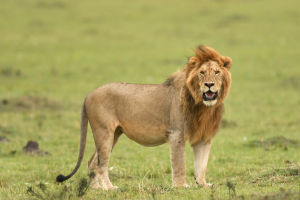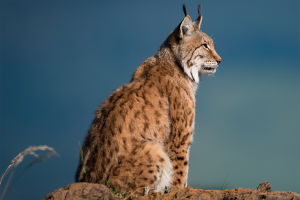When we hear the word "fox," the image of a red fox usually comes to mind, as it is the most common fox species.
However, there are many other fox species around the world that we may not have encountered, featuring striking stripes, beautiful colors, and unique characteristics.
Let’s explore the seven most beautiful types of foxes in the world.
1. Crab-Eating Fox
The Crab-Eating Fox has short, dense fur that ranges in color from gray-brown and yellow to deep gray. Its hind legs and back are adorned with black markings, while its muzzle, ears, and paw pads are reddish.
The tail, legs, and tips of the ears are black. This fox has a slender body with short, strong legs. Its bushy tail stands up when excited, and its ears are broad and rounded. With 42 teeth, it is omnivorous, eating both meat and vegetables.
2. Cross Fox
The Cross Fox is similar in size to the red fox, with black legs and underbelly, while its head, shoulders, and back are brown.
Notably, it has a black cross pattern on its front shoulders and back. There are many mutations of the Cross Fox, as it is a hybrid, resulting from crosses between red foxes, silver foxes, or shadow foxes.
3. South African Fox
The South African Fox is lightweight and agile, with a fluffy coat of reddish-yellow fur, making it undeniably one of the most beautiful members of the animal kingdom.
Tamed South African Foxes are intuitive and often curl up to sleep with their human companions. They are highly alert; when hunting hares, they lower their bodies to the ground, hiding their heads between their paws while their ears rotate slowly in the air, keeping a sharp eye on the rapidly moving prey.
4. Silver Fox
The Silver Fox has outer fur that is significantly longer than the underfur, particularly beneath the throat, behind the shoulders, on the sides, and on the tail, with a length difference of about two inches.
The base of the underfur is brown, transitioning to gray, with black tips. Its fur is soft and shiny, once considered finer than that of minks. The underfur covers the entire body of the Silver Fox, though it is coarser on the tail.
5. Marble Fox
The Marble Fox boasts a coat of pure white fur, accented by markings reminiscent of marble on the edges of its ears, forehead, eyes, back, and tail, featuring black, brown, or pearl-like colors.
From a distance, it resembles a block of pristine marble. The Marble Fox evolved from the red fox genes and was first discovered in a Norwegian breeding farm in 1945. Not only does it have beautiful fur, but its appearance also exudes a sense of elegance rather than traditional cuteness.
6. Gray Fox
The Gray Fox resembles a small dog with a bushy tail. It has black stripes from its eyes to its neck, a short snout, and short legs with large toe pads and curved claws.
The upper body is light gray, the lower body is dark yellow-brown, and the sides and chest are reddish-brown, with a prominent black stripe along its back. Its throat and abdomen are white, and its thick tail features a black stripe with a black tip. The Gray Fox possesses powerful short legs and claws that provide excellent balance and climbing ability, allowing it to grasp onto tree trunks and branches. Its fur coloration helps it hide from predators.
7. Fennec Fox
This adorable fox species is highly regarded for its large, elongated ears. The Fennec Fox hails from North Africa and the Sahara Desert. Its beautiful long ears serve not only as a cute physical feature but also as a means to dissipate body heat.
These large ears enable the Fennec Fox to hear prey moving beneath the sand. Its creamy-colored fur helps it withstand the cold of the night while also aiding in heat regulation during the day.
Foxes, these mysterious and captivating creatures, draw our attention with their diverse species and unique appearances. From the agility of the Crab-Eating Fox to the cuteness of the Fennec Fox, they showcase nature's boundless creativity. We hope this article inspires you to further explore and appreciate the fascinating world of foxes.


